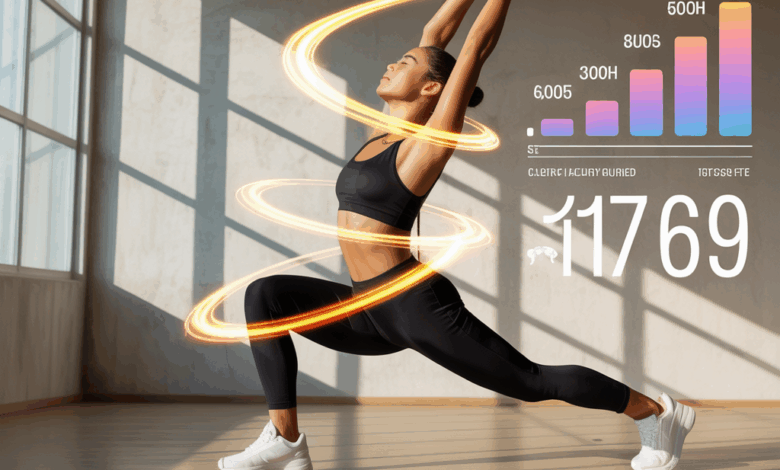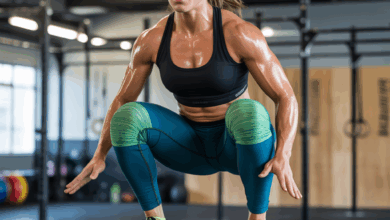How many calories do I burn stretching — realistic estimates & routines

Ever stood up from your desk, rolled your shoulders, and wondered, “Is this doing anything for my weight loss goals?” You’re not alone. Whether you stretch to feel less stiff, recover after a run, or sneak in a quick movement break, knowing how many calories you burn can help you plan smarter workouts and realistic expectations.
How many calories do i burn stretching? Realistic estimates
Short answer: stretching burns calories, but it’s usually modest compared with cardio or strength training. The exact amount depends on the type of stretch, how vigorously you move, and your body weight. A simple way to estimate is to use METs (Metabolic Equivalent of Task). Gentle static stretches are around 2.0–2.5 METs, while dynamic mobility work or flow-style yoga can reach 3.0–4.0 METs.
Use this formula to estimate calories burned per minute:
Calories/min = MET × 3.5 × body weight (kg) ÷ 200
Examples (approximate):
- Static stretching (MET ≈ 2.3): 150 lb (68 kg) person → ~2.7 kcal/min → ~27 kcal for 10 minutes
- Dynamic stretching / mobility flow (MET ≈ 3.3): 150 lb person → ~3.9 kcal/min → ~39 kcal for 10 minutes
- Power yoga / vigorous mobility (MET ≈ 4.0): 200 lb (91 kg) person → ~6.4 kcal/min → ~64 kcal for 10 minutes
Why the numbers seem low
Stretching primarily improves flexibility, mobility, and recovery rather than burning large numbers of calories. That said, more active stretching (dynamic, flow, or PNF) raises heart rate and metabolic demand, so you can increase calorie burn by elevating intensity and reducing rest between movements.
Factors that affect how many calories you burn stretching
- Type of stretching: static vs dynamic vs PNF vs yoga flows — dynamic and PNF burn more.
- Duration and pace: longer sessions and continuous movement raise total calories.
- Body weight and composition: heavier people burn slightly more per minute; more muscle increases resting metabolism.
- Intensity: adding pulses, mobility circuits, or transitions increases effort.
- Age and fitness level: fitter individuals may perform more intense flows that burn more calories.
Stretching routines that burn more calories (sample workouts)
Want to stretch but get more metabolic benefit? Try these routines that combine mobility with movement to up your calorie output.
10-minute morning mobility (low-impact, moderate burn)
- 1 minute: Cat-Cow + deep breaths (warm-up)
- 2 minutes: Dynamic hip circles and leg swings
- 2 minutes: World’s Greatest Stretch (slow lunge + rotation)
- 2 minutes: Downward dog to plank flow (continuous)
- 3 minutes: Standing quad/hamstring mobility with light pulses
Estimated calories: 25–45 kcal depending on intensity and body weight.
20-minute power yoga flow (higher burn)
- Sun Salutations A & B variations (10 minutes) — continuous movement
- Standing balance flow and lunges (5 minutes)
- Cool-down stretches and seated forward fold (5 minutes)
Estimated calories: 120–200 kcal depending on weight and pace.
15-minute mobility circuit (for active recovery)
- 1 minute each: Slow jumping jacks (low-impact), hip openers, shoulder pass-throughs
- 3 rounds total with 30 seconds rest between rounds
Estimated calories: 80–130 kcal.
Practical tips to maximize benefits from stretching
- Combine stretching with strength training to increase muscle mass and long-term calorie burn.
- Use dynamic stretching as a warm-up to prepare for higher-intensity workouts that burn more calories.
- Incorporate mobility circuits into your routine—short, controlled movements between stretches increase heart rate and energy use.
- Prioritize consistency: improved mobility can enhance exercise performance, indirectly boosting total calories burned across workouts.
- Track progress with wearable devices for approximate calorie counts but treat them as estimates, not exact measures.
Real-world examples: what this looks like for different goals
Trying to decide how to use stretching in your fitness plan?
- Weight loss goal: Use dynamic stretching as part of a higher-calorie-burn workout—pair with cardio or resistance training and watch nutrition with a solid nutrition guide.
- Flexibility & recovery: Longer static and PNF sessions will help mobility and reduce injury risk while modestly increasing daily calorie burn.
- Desk job relief: Short mobility breaks throughout the day boost NEAT and reduce stiffness—small calorie gains add up over time.
Frequently Asked Questions
Stretching alone produces modest calorie burn, so it’s not a primary weight-loss tool. However, it supports weight loss by improving recovery, increasing range of motion, and allowing you to train harder in cardio and strength sessions.
Yes — dynamic stretching involves continuous movement and typically elevates heart rate more than static holds, so it burns more calories per minute. Use both: dynamic as warm-up, static for cooldown and flexibility.
For flexibility gains, 10–20 minutes several times per week is effective. For increased calorie burn, longer or more intense flows (15–30 minutes) provide higher overall energy expenditure.
Conclusion — how many calories do i burn stretching and what should I do next?
In summary, answer to “how many calories do i burn stretching” is: some, but not a ton — usually a few calories per minute for gentle stretching and more for dynamic or flow-based sessions. The real value of stretching is improved mobility, recovery, and better workout performance, which helps you burn more calories overall when combined with cardio and strength training.
Ready to turn stretching into a tool for better workouts and smarter progress? Try a mobility circuit today, then check out our workout routines to pair with it and our wellness tips for daily habit ideas. Share which routine you try and how it makes you feel — small changes compound into big results.
Call to action: Pick one of the sample routines above and commit to it for two weeks. Track how your flexibility and workout performance improve — and notice how those improvements translate to more effective calorie burn when you hit the gym.





